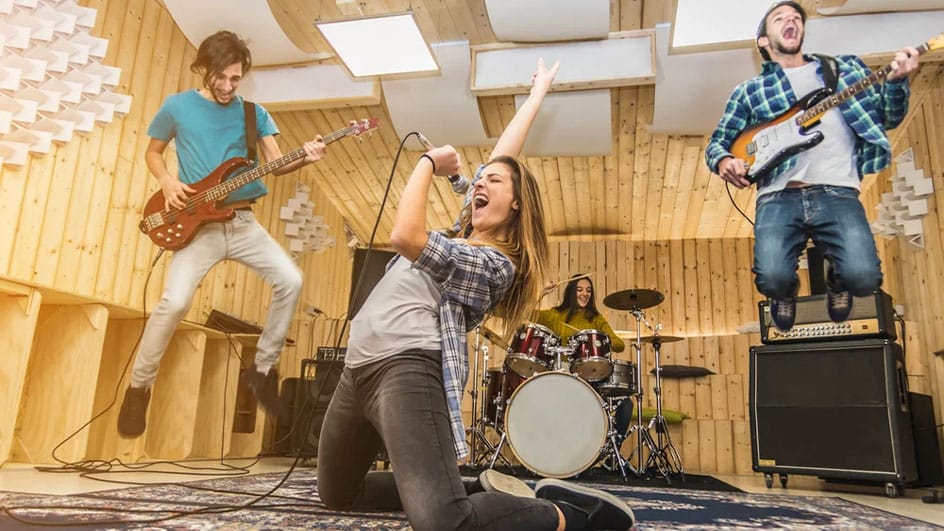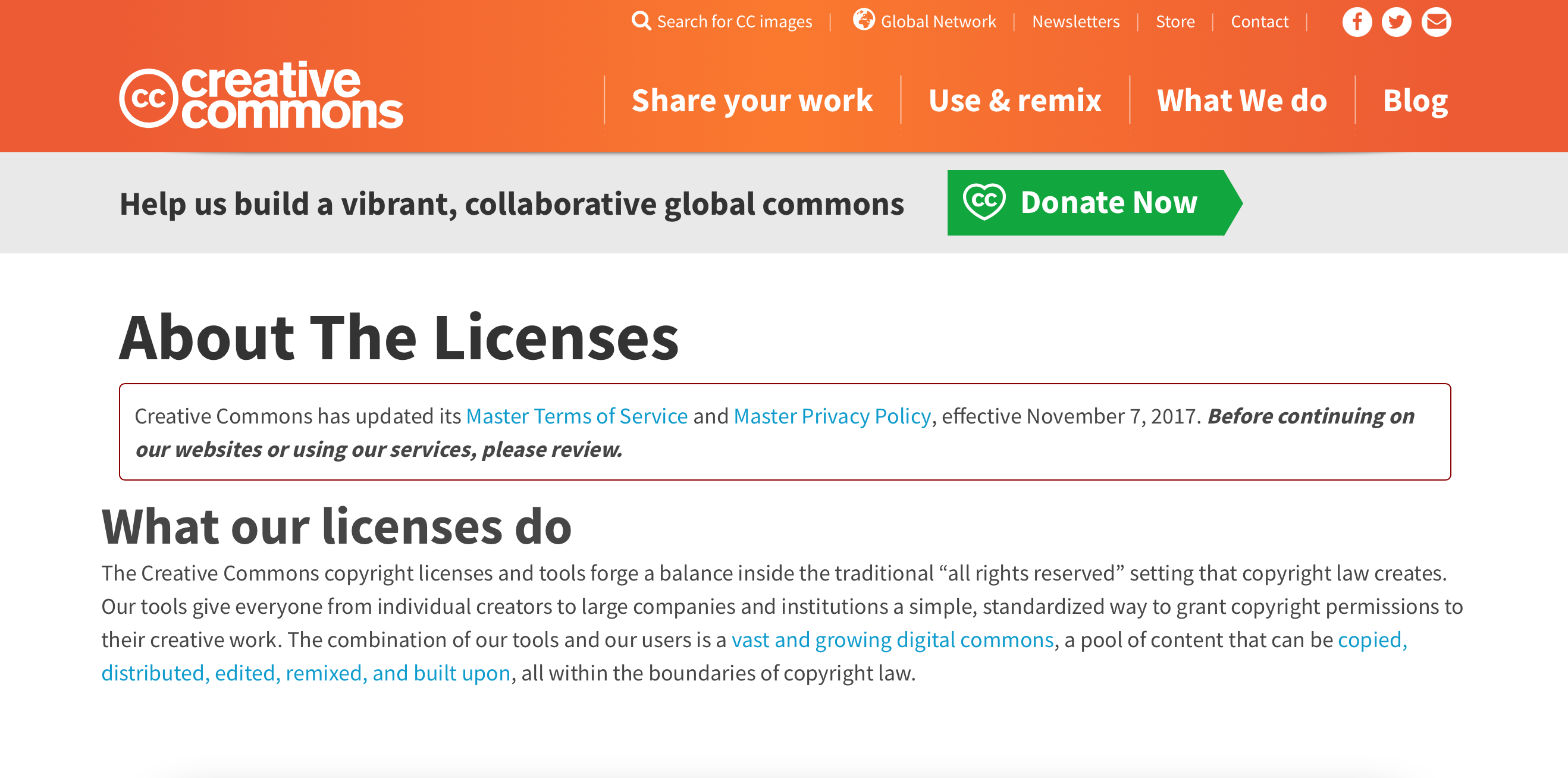What Does “Commercial Use” Mean for Video? Royalty Free Music Downloads to Help You Make Money
Soundstripe Team
Soundstripe Team

Jun 11, 2018
*Updated January 2022
Music plays a big role in helping filmmakers create successful videos that audiences want to watch, but where can you find great royalty free music downloads that will help you earn money on your videos?
The Creative Commons (CC) allows artists to offer their songs and music for use by the public, but navigating the CC can be tricky. That's because certain CC licenses do not allow filmmakers to download music to use for commercial activities.
So what does commercial usage entail? What if your video is a simple makeup tutorial (noncommercial), but you earn income from YouTube ads? What if you provide a useful video webinar but then plug your book at the very end? Are these commercial usages?
Let’s explore what does and does not comprise commercial use of music for YouTube videos or any other videos that you might want to post on social media or your own website.
Then, we'll take a stroll through the Creative Commons to learn more about its licensing structure.
Commercial use refers to the monetization of a product, service, or media. For example, if you plan on creating a video for marketing purposes, this is considered commercial use because the desired end result is financial gain.
However, there's still a lot of grey area between commercial use and non commercial use — especially on YouTube.
YouTube videos can be commercial use videos, but they can also be personal use (i.e. non commercial) videos. It all depends if YouTubers are monetizing their videos, working with brand sponsors, selling merch, etc.
It's important to know the difference between commercial use and non commercial use, especially when it comes to licensing music for video projects. So let's dig a little deeper into this topic.
According to the language of the license, non commercial use is defined as, “not primarily intended for or directed towards commercial advantage or monetary compensation.”
Does this wording seem a little vague to you? That’s the point. According to the Creative Commons wiki, “the definition of NonCommercial is intentionally flexible; the definition is specific enough to make its intended operation and reach clear, but versatile enough to cover a wide variety of use cases.”
Certain cases are pretty cut and dry. If you add the music into a video game that you plan to profit from, that's commercial use. And if the song is for a piece of software, a training video on corporate websites, or an ad for a business, then you're using the music with the goal of a financial transaction.
But is there a clear difference between personal use and commercial use?
For example, the situation becomes murkier when we look at YouTube background music added into videos that garner YouTube ad revenue. The video itself might not be considered commercial, in the example of a cool sports video or funny animal video. But if the intention is to generate enough followers to earn ad revenue via YouTube monetization, does the video become a commercial product?
What about if you include a callout for your business, book, or podcast at the end of your video? The CC definition suggests that the work can’t be used with the specific purpose of financial advantage, whether that is spreading brand awareness or encouraging someone to purchase a product.
So how do you know if your video is primarily commercialized or only partly commercialized?
In any case where licensed materials are involved, it’s always better to be safe than sorry. If you aren’t sure which category your video will fall into, it’s probably best not to use a work with a non commercial CC license. By sticking with only commercial use CC licenses, you won’t have to worry about parsing the details or risking a lawsuit by the music’s copyright holder.
But if you are absolutely obsessed with a particular song, you can always reach out to the artist directly and make sure you will follow the expected legal requirements.
Whenever an artist creates anything — a song, poem, video, or even just a set of lyrics — they own that work and possess a copyright on it. According to copyright law, that means no one else has the right to use that work without the artist’s permission or without purchasing a license from the artist.
That’s why the owner of the restaurant you went to last night had to buy a commercial license for the beautiful jazz music wafting from the speakers. It’s also why you can’t just use Katy Perry’s latest hit for your YouTube video background music without earning a swift takedown notice.
The restrictive nature of copyright is meant to protect artists, but it can also backfire. Many artists want people to use and share their work because it is a proven way for them to gain recognition and visibility. For these artists, copyright is less like a protective wall and more like an obstacle.
That’s where the Creative Commons galloped in (possibly on a white horse) around 2001. The Creative Commons (CC) is a nonprofit organization founded by the Center for the Public Domain. In one fell swoop the CC figured out a way to maintain the protections of copyright while also giving artists an easy way to offer their work for public use with optional restrictions.
Their solution comes in the form of six different types of a "Creative Commons license" that range from complete flexibility to highly restrictive. The licenses work on top of the existing copyright and allow the artist to share their work while maintaining ownership.
(Note: This article is all about music, but the CC licenses can cover all sorts of things, from images to educational materials, software, and even scientific research.)
Sound a little confusing? Let’s make it simple. Each CC license has a name and a simple code that lets filmmakers quickly and easily understand what usage is allowed for each work.
This may all seem dry and confusing, but for most filmmakers, the four licenses they should be the most focused on are: CC BY, CC BY-SA, CC BY-NC, and CC BY-NC-SA.
If you don’t want other people to be able to use parts of your video in their own work, then you can ignore the CC BY-SA and the CC BY-NC-SA. That leaves just the Attribution license (CC BY) and the Attribution-NonCommercial license (CC BY-NC).
This leads us all the way back to our original question. What does it mean for a video to be “commercial” vs. “non commercial”? That answer is incredibly important, because according to the CC, non commercial licenses are the organization’s most popular type license. If you determine that your videos are for non commercial use, you could drastically increase your CC music selection.

If you’re interested in wading into the sea of CC licensing, there are many different online tools that will help you search for music and will even let you sort by license type so you can, for example, only search for songs that allow for commercial use. You can also hop onto the Creative Commons site and Search the Commons, which will give you access to music from Jamendo, YouTube, SoundCloud, and ccMixter.
Using the CC can be helpful to patient filmmakers on a tight budget. The CC offers a wide range of music options for those who take the time to look. However, you’ll need to wade through a lot of poor quality music first, and you might not find exactly what you’re looking for. If something is free, there’s usually a reason!
If you’d rather not bother trying to keep all the different CC licenses straight, or if you don’t have the time to search around for that musical diamond in the rough, consider signing up with a company that specializes in royalty free music downloads for filmmakers.
At Soundstripe, our song library is filled with royalty free music for YouTube, your website, your other social media sites, or wherever else you want to use it. For one low monthly or yearly subscription cost, you can access our entire library and use all the songs you want any way you want. There are no confusing licenses or risks of getting sued for copyright infringement.
Check out our music library, and sign up for a subscription today.
Interested in reading more top resources and getting our best filmmaking tips and tricks? Here are a couple of our most popular articles from across the Soundstripe blog: